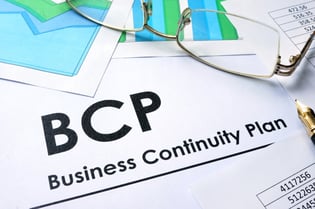
We never really know when a disaster may strike. Even with some prior inclinations, events unfold in their unique way and multiple things can go wrong.
This is where a Business Continuity Plan (BCP) comes into play. To give your law firm the best shot during a catastrophe, you need to come up with a comprehensive and tested plan. You should also provide a copy to every person responsible for executing it.
Lacking a plan doesn’t mean that it may take a long time for your company to recover. It means you may lose if for good.
That explains why all businesses should know the answer to the question, “What does a business continuity plan typically include?” Keep reading for a quick guide on the details.
What is Business Continuity?
Before we get to the essentials of a business continuity plan, it’s vital that you understand what it is. Business continuity (BC) refers to maintaining the functionality of a business or resuming fast after a disaster (ex. fire, cyberbullying, or floods) occurs.
What Does a Business Continuity Plan Typically Include?
If this is the first time you’ve heard of a business continuity plan, the following tips will get you started by understanding what you’ll need.
Analysis of Potential Threats
Your firm’s response will depend on the extent and nature of the disaster. Here are examples of disasters and what they may destroy.
- A natural disaster physically affecting your IT infrastructure
- A disease or illness outbreak affecting your human resource
- Cyber terrorism affecting your network but leaving your hardware and personnel intact
Think about all the scenarios that may affect your business and include the solutions in your business continuity plan (BCP). This will make sure you’re not caught by surprise.
Areas of Responsibility
Another thing that should be on the top of the answers to, “What does a business continuity plan typically include?” is the delegation of power. A primary part of crisis management, which is the immediate problem once a disaster happens, is assigning duties and establishing the chain of command.
The middle of a disaster occurring is not the ideal time for the head of departments to start squabbling over who is superior to who. Keep in mind that some crises may lead to a shortage of personnel or some staff may be on vacation or sick in the disaster occurrence. Therefore, you’ll need to assign alternates early in advance.
It’s also advisable to train personnel in preparation for a disaster, incident management and the way to move forward to the recovery process.
Emergency Contact Info
You should keep your contact list of organizations or people that need to be reached during a crisis updated. There’s won’t be a lot of time to scramble for phone numbers so it’s best to have these readily available.
Include information of both internal personnel such as the CEO and legal advisor, as well as external workforces and services such as ambulance and utility companies.
Disaster Recovery Teams (DRT)
After the disaster occurs, you’ll require a team to sort things out and restore everything to their usual settings. The BCP should have a ready copy of a DRT, made up of the personnel who are well-trained to handle their roles.
The DRT members will work together with the emergency team, and they should have the resources they’ll need to handle the tasks. The equipment could range from software to protective clothing, depending on the crisis.
A business recovery team is set in place to make sure these things are in place for a quicker recovery turnaround.
Off-site Backup of Crucial Data
The first answer to, “What does a business continuity plan typically include?” should be a backup, for a law firm. Losing the files of cases in progress could lead to confusion in a law firm. Therefore, there should be a backup in case the digital data is compromised.
Many organizations have great systems for backing up information but store them in the same building. This means if a disaster affects the building, they lose their backup too. You should back up data to a remote server or store it in a removable disk and place it in a different location.
Remember to inform the personnel on the location of the backup data as well as the passwords. This will ensure they get things running within the shortest time possible.
Backup Power Arrangements
Many types of physical crisis can lead to power loss. A power outage can be counted as a disaster by itself. You should have a plan on what to do if there’s a power outage to continue the business day.
You may consider buying generators. In this case, make sure your employees know where the generator is and how to power it.
Since using a generator is more expensive than the power grid, the BCP should state at what point the organization should close down and wait for power restoration. It should also mention the person involved in making that decision.
Alternative Communications Channel
If your law firm’s phones or the internet are low, how will you communicate with customers and employees who might be off-site?
Your BCP should include all the employees with cell numbers and their contacts. It should also mention if you have other devices such as ham radios that could be used during a disaster.
If your firm runs its email servers, ask employees to provide employees’ alternative email addresses that they regularly check that may be used to contact them during an emergency.
What Does a Business Continuity Plan Typically Include?
The answer to the question “what does a business continuity plan typically include” is different for every firm. All companies have different potential crisis depending on the nature and location of the business.
However, the common thing is the lack of a good business continuity plan can result in the closure of an enterprise. If you don’t have a BCP, it’s time to think about one and act fact.
The tips mentioned will give you an idea of what to include in your BCP. If you need help creating one for your law firm, feel free to contact us today.
Ludovic Levivier
Founder & CEO, LINC Project, INC. a Managed Service Provider in New York and San Francisco



.png?width=306&height=50&name=Logo_width.jpg(2).png)


